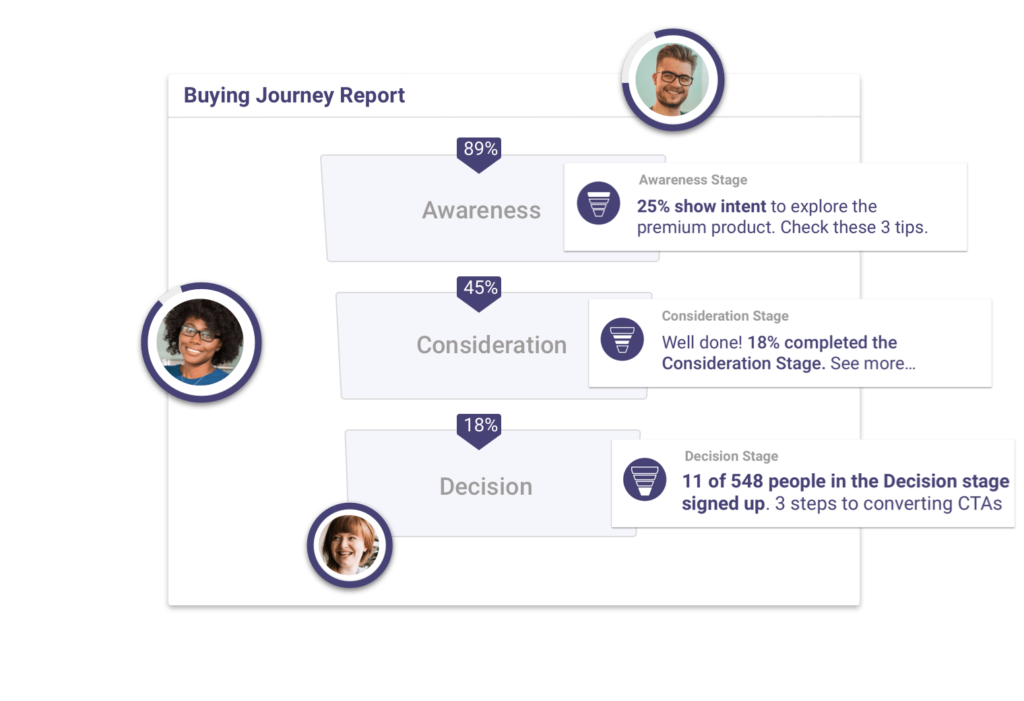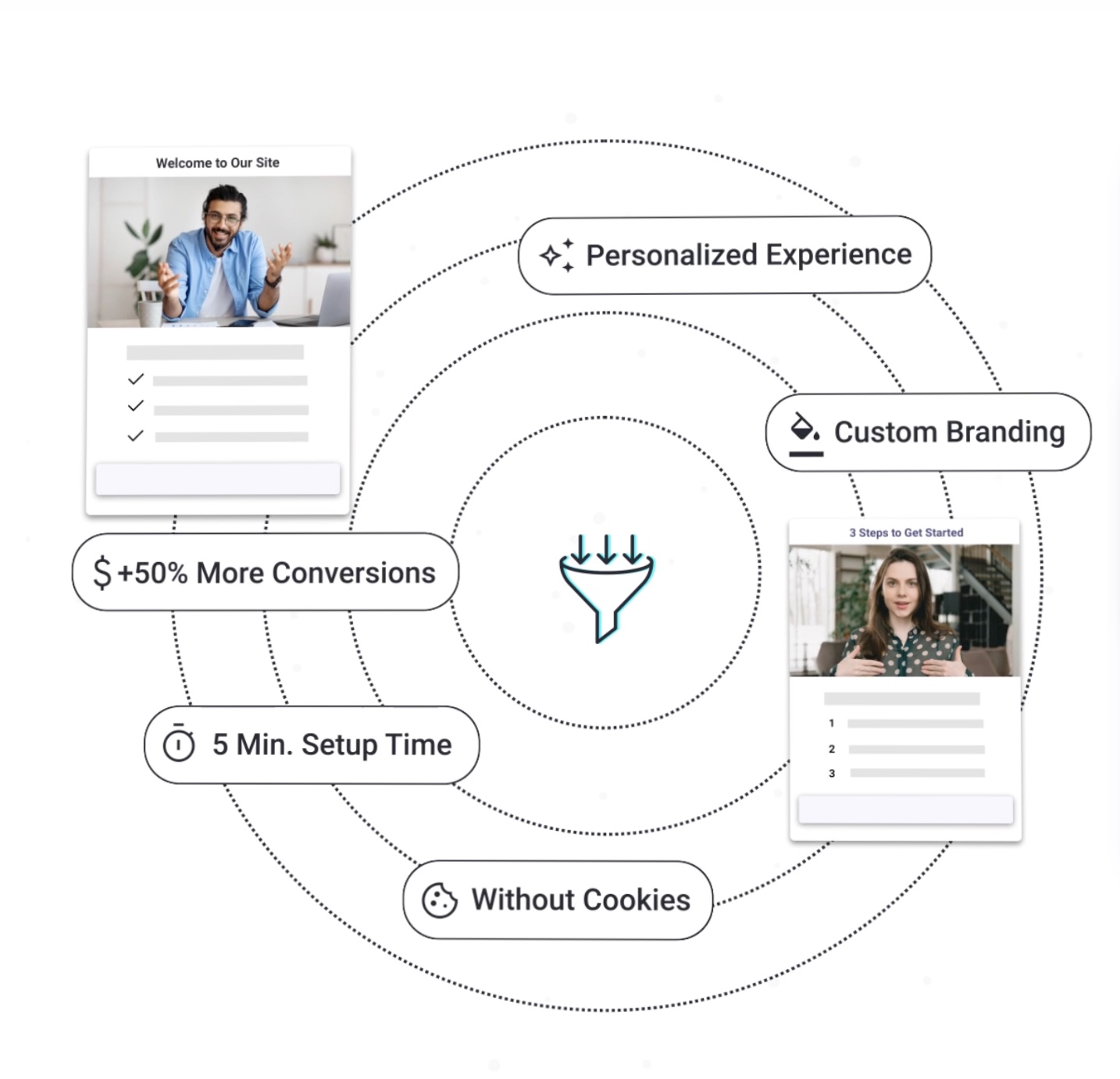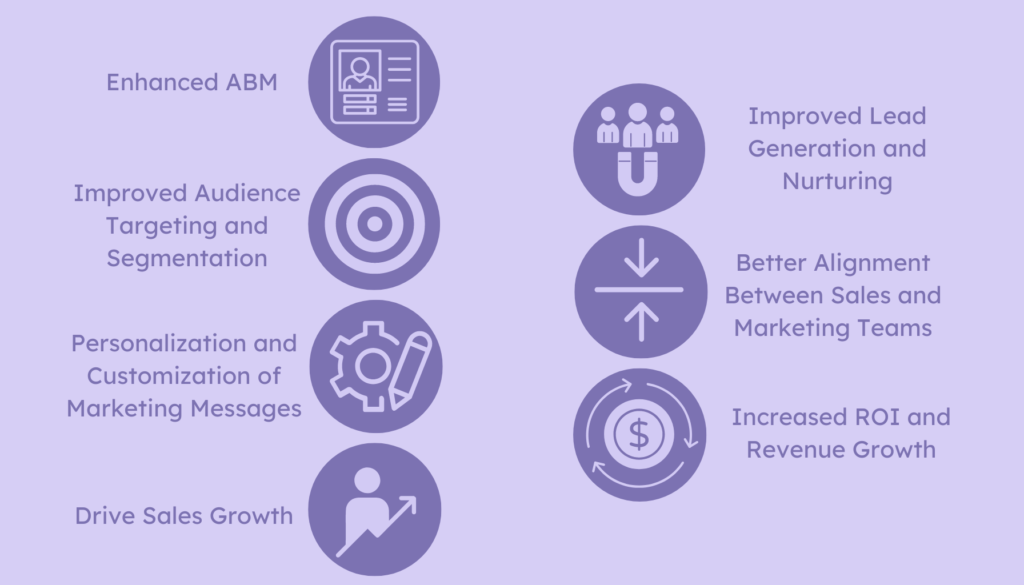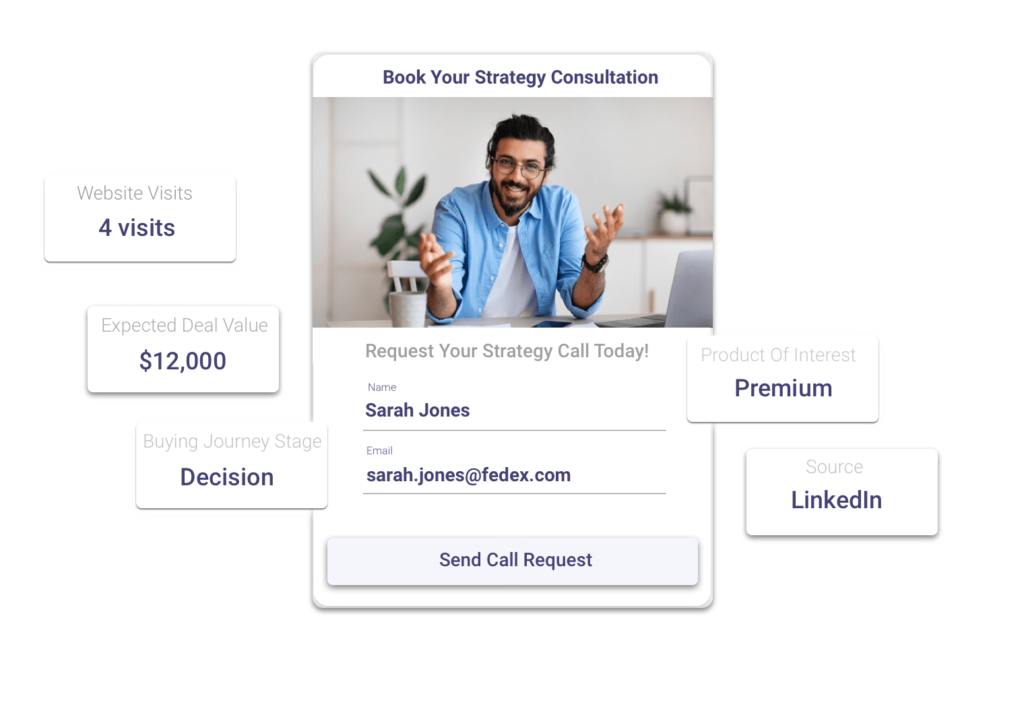The Power of Intent Data Marketing: An In-Depth Look


Data is the backbone of marketing strategies. With the increasing amount of information available online, you can leverage data to better understand your target audience and create more effective marketing campaigns.
One form of data that has gained significant importance in recent years is intent data. Intent data is the information collected from a user’s online behavior that indicates their interests, needs, and intentions. It provides you with valuable insights into your potential customer’s preferences and purchasing behavior, allowing you to create personalized and targeted marketing campaigns.
We’ll explore the power of intent data marketing and its role in driving business growth; discussing the definition of intent data and its significance in marketing strategies. Plus we’ll provide an in-depth look at the benefits of using intent data for businesses of all sizes.
What is Intent Data?
Intent data is the information that reveals a user’s interests, needs, and intentions. It helps identify and understand potential customers who are in the process of making a purchase decision. Intent data is different from other types of data because it provides you with valuable insights into a user’s behavior, indicating their level of engagement and readiness to buy.
It can be classified into different types, such as first-party, third-party, and behavioral intent data. First-party intent data is collected directly from a business’s own website or marketing channels, while third-party intent data is gathered from external sources, such as data providers or publishers. Behavioral intent data, on the other hand, is collected from a user’s online behavior, such as their browsing history, search queries, or social media activity.
To collect and analyze intent data, there are a variety of tools and technologies. These tools help to track and monitor user behavior across different channels, such as websites, social media platforms, or email campaigns. By analyzing this data, you can gain a better understanding of your target audience and create more personalized and targeted marketing campaigns.
The sources of intent data are diverse, and they include website behavior, search history, social media activity, email engagement, and more. Website behavior data is one of the most common sources of intent data, as it provides information about how users interact with a website, what pages they visit, and what actions they take. Search history data, on the other hand, provides information about what users search for online and what topics they are interested in. Social media activity data will give you insights into how users engage with your brand on social media platforms, such as likes, comments, and shares.

Measuring or calculating intent data can seem like a daunting task, but with the right tools and techniques, it is possible to gather valuable insights into a potential customer’s behavior and intentions.
To measure first-party intent data, you can use web analytics tools such as Pathmonk Intelligence to analyze user behavior on your website. This data can include information such as the pages a user has visited, how long they spent on each page, and whether or not they completed a desired action such as filling out a contact form or making a purchase.
Third-party intent data is collected from external sources such as social media platforms, industry publications, and online forums. Data aggregators such as Bombora collect this data and provide it to businesses for a fee. This data can include information such as the content a user has engaged with, the keywords they have searched for, and the websites they have visited. By analyzing this data, you can gain insights into a user’s interests and intentions even if they have not visited your website directly.
Calculating intent data involves analyzing the data collected and identifying patterns that indicate user interests and intent. For example, if a user visits a specific product page multiple times, it could indicate that they are interested in purchasing that product. By tracking and analyzing this behavior, you can create targeted marketing campaigns that are more likely to convert.
The Intersection of Artificial Intelligence and Intent Data
AI can be used to analyze intent data in a variety of ways. For example, machine learning algorithms can be used to identify patterns in customer behavior, allowing you to create more accurate and personalized customer profiles. This can help to identify your customer’s needs and preferences, so you can create more relevant and targeted marketing campaigns.
AI can also be used to automate the process of analyzing intent data. For example, natural language processing (NLP) algorithms can be used to analyze customer interactions with chatbots or customer service representatives, facilitating the identification of customers’ pain points and concerns. You’ll be able to improve your customer service, ultimately leading to higher customer satisfaction and loyalty.
More Sales From Your Website With AI
Personalized interactions based on your users' behaviour to get +50% more conversions.

One of the key benefits of using AI in conjunction with intent data is the ability to create more targeted and personalized marketing campaigns. By analyzing customer behavior and preferences, you can create highly targeted marketing campaigns that are more likely to resonate with your target audience. For example, if a business knows that a particular customer is interested in a specific product or service, it can create a targeted email campaign or social media ad that highlights that product or service.
AI can also be used to optimize the timing and delivery of marketing campaigns. For example, predictive analytics algorithms can be used to identify when a particular customer is most likely to make a purchase. This information can then be used to schedule marketing campaigns to coincide with that customer’s buying cycle, increasing the likelihood of a successful sale.
How to Use Intent Data in Your Marketing Strategy
Enhanced ABM (Account-Based Marketing)
Account-based marketing (ABM) is a B2B marketing strategy that focuses on targeting specific accounts or companies, rather than individual leads or customers. By using intent data, you can determine which accounts are most likely to be interested in your products or services and tailor your marketing efforts accordingly.
If a business sells marketing automation software, they might use intent data to find companies that have searched for marketing automation solutions or have visited their website’s marketing automation product page multiple times. They can then create personalized marketing campaigns for each account, using the insights gained from the intent data to craft messaging that speaks directly to the prospect’s interests and needs.
Improved Audience Targeting and Segmentation
Intent data can improve audience targeting and segmentation. By analyzing user behavior data, you can gain insights into your potential customer’s interests and needs, allowing you to create more targeted and personalized marketing campaigns.
A business that sells pet products might use intent data to identify users who have been searching for information about pet care or visiting pet-related websites. They can then create targeted marketing campaigns for this audience, promoting the products that are most relevant to pet care.
Personalization and Customization of Marketing Messages
Personalization is becoming increasingly important in marketing, with consumers expecting a more personalized experience from the brands they interact with. Intent data can help create personalized and customized marketing messages that resonate with your target audience.

Drive Sales Growth/ Reach Prospects in the Zero Moment of Truth (ZMoT)
The Zero Moment of Truth (ZMoT) refers to the moment when a consumer researches a product or service right before making a purchase. By using intent data, you can identify users who are in the ZMoT and create marketing campaigns that target them at this critical moment.
Improved Lead Generation and Nurturing
Intent data can also be used to improve lead generation and nurturing. By analyzing user behavior data, you can identify users most likely to be interested in your products or services and create targeted marketing campaigns to capture their attention. Pathmonk Accelerate offers a unique approach to this by showing website visitors tailored micro-experiences based on their real-time intent, increasing conversions by up to 50% on average.

Better Alignment Between Sales and Marketing Teams
Improve alignment between sales and marketing teams. By sharing intent data with the sales team, marketing can provide them with valuable insights into potential customers’ interests and needs, allowing them to tailor their sales pitches accordingly.
Marketing might share intent data with the sales team that shows which accounts have been searching for your product or have visited your product page multiple times. The sales team can then use this information to tailor their sales pitches and highlight the specific benefits.
Increased ROI and Revenue Growth
Using intent data in your marketing strategy can lead to increased ROI and revenue growth by helping you make more informed decisions about where to allocate your marketing budget and resources.
By analyzing user behavior data, you can gain insights into which marketing channels and campaigns are driving the most engagement and conversions. You can then allocate your marketing budget and resources accordingly, focusing on the channels and campaigns that are delivering the highest ROI.
Additionally, intent data can help you define new opportunities for revenue growth. By analyzing user behavior data, you can identify emerging trends and patterns in customer behavior, allowing you to create new products or services that meet your customers’ evolving needs.
How Can Intent Data Optimize Your Marketing Campaigns?
Ready to see what intent data can do for you? When considering an intent solution, it’s important to adopt a considered approach that truly recognizes your target market, drives accurate insights, and is able to provide a fully personalized user experience, and quality return.
Use our ROI calculator to check how many more leads, deals, and sales you could receive automatically by leveraging intent data in your marketing strategy.
If you would like to explore how intent can integrate into your sales and marketing approach, book a personalized workshop with our growth specialists, and together we’ll explore how AI-powered intent data can boost your revenue.
Conclusion
Intent data marketing is a powerful tool for anyone looking to enhance their marketing strategies and drive growth. By analyzing user behavior data, you can gain valuable insights into customers’ interests and preferences, to ultimately create more personalized and relevant marketing campaigns.
The benefits of using intent data are clear, from improved audience targeting and segmentation to better alignment between sales and marketing teams. By leveraging intent data and Artificial Intelligence, you can create more effective ABM campaigns, generate higher-quality leads, and drive revenue growth.
By staying up-to-date on the latest trends and techniques in this field, you can stay ahead of the competition and provide your customers with the best possible experiences.





